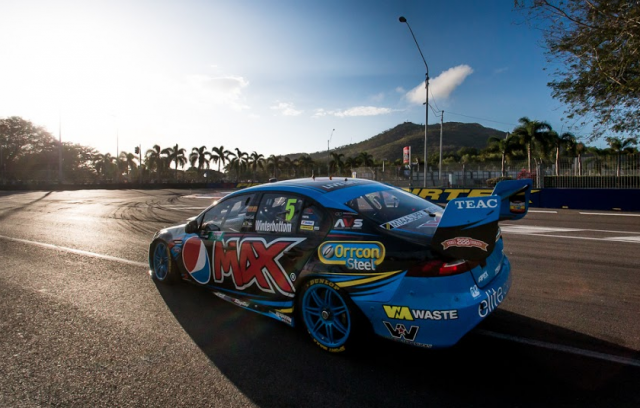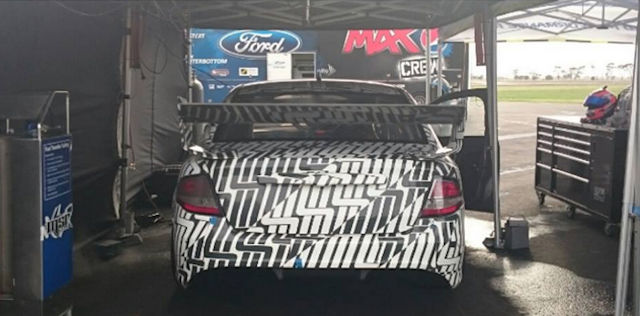

V8 Supercars’ technical department has categorically dismissed ‘rumours and claims’ of a lack of aerodynamic parity amid Ford’s current spell of domination.
As reported last week, parity was a hot topic in the paddock at the recent Castrol Edge Townsville 400, where Prodrive’s new FG X Falcons continued their run of form with a double victory.
V8 Supercars’ technical department has responded by issuing a letter to all team managers underlining its confidence that aerodynamic parity was achieved during the homologation tests in January.
Seen by Speedcafe.com, the letter confirms that, in addition to regular analysis of micro-sector times at race meetings, the aerodynamic homologation data has been rechecked by the David Stuart-led technical team.
“The aero figures achieved in January have been rechecked and along with the analysis of the on-track performance of all Cars for all VCS race meetings this year to date, the V8SC Technical Department are satisfied that there is no aerodynamic advantage or disadvantage,” concluded Stuart in the letter.
January saw the new FG X Falcon and revised versions of the Holden Commodore VF and Nissan Altima L33 homologated against the baseline Ford Falcon FG prototype.
The Ford runners had complained for the last two seasons that they had been unfairly robbed of rear downforce amid the change to the Car of the Future for 2013, where the FG prototype was first used as the baseline.
While the Mercedes and Volvo teams chose not to run their cars in this year’s tests after homologations in 2013 and 2014 respectively, all five competing vehicles are now benchmarked against the FG prototype.
This year’s homologations had been undertaken with a beefed-up procedure following the establishment of an aerodynamic working group and the appointment of Stuart last year.
In the letter to teams post-Townsville, Stuart stressed the transparency of this year’s VCAT (V8 Supercars Aerodynamic Testing) for all homologation teams.
V8 Supercars’ testing takes place at the RAAF base in East Sale, Victoria, and sees open-air coast-down running to equalise downforce and drag across the brands.
“The VCAT held in January this year was the most transparent of any aero test conducted by V8SC,” Stuart wrote.
“The Homologation Teams attending were provided with the data from their Cars almost as soon as the particular test run was completed.
“The Teams were also provided with the method of analysis (workbook) that V8SC were using to perform our analysis.
“Teams also had the opportunity to use their own programs to analyse their data, in all cases the Teams were encouraged to communicate with V8SC if they felt there was a discrepancy with their results compared to those of V8SC.
“Prior to the conclusion of the test, all Homologation Team representatives were presented with the final figures for all Cars present, and all agreed to the final Homologation figures presented by V8SC.”
In addition to the homologation of the FG X, this year saw the Holden receive a front undertray extension and revised rear wing position as the marque chased lower drag from its Commodore body.
A multitude of changes – most notably an end-plate mounted rear wing – were also locked in for the Nissan after similar complaints of high drag from its previous package.





















Discussion about this post